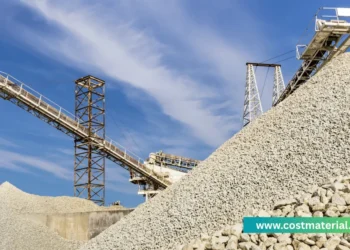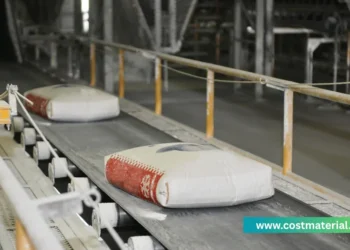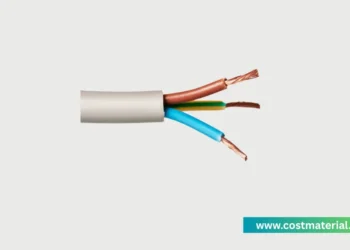Table of Contents
Navigating the I-Beam Price List in the Philippines
Embarking on a construction project in the Philippines requires a deep understanding of material costs. Consequently, the I-beam price list is a critical document for builders, engineers, and homeowners. This comprehensive guide provides an in-depth look at I-beam prices for 2025. Furthermore, it explores the various factors that influence these costs. We aim to equip you with the knowledge to make informed purchasing decisions. After all, a successful project begins with an accurate budget.
I-beams, also known as H-beams or wide flange beams, are essential for structural support. They provide the backbone for buildings, bridges, and other infrastructure. Therefore, understanding their pricing is not just about numbers. It is about ensuring the safety and integrity of your project. This article will delve into the different types of I-beams available. Additionally, we will discuss their specific applications in modern construction. We will also provide a detailed price list to guide your procurement process.
1 Understanding the Dynamics of I-Beam Pricing
The cost of I-beams in the Philippines is not static. It fluctuates based on a variety of local and global factors. A savvy project manager must stay informed about these market dynamics. This knowledge allows for better budgeting and cost control. Ultimately, it leads to more efficient project execution.
Global Market Influence on Steel
The international price of raw materials significantly impacts the local I-beam price list. Iron ore and coking coal are the primary components of steel. Their prices on the world market create a ripple effect. This effect travels all the way to local suppliers in the Philippines. For instance, a surge in global demand can quickly inflate prices. Conversely, a market surplus may lead to more affordable steel products. Therefore, keeping an eye on global commodity trends is beneficial.
The Role of Currency Exchange Rates
The Philippine peso’s performance against the US dollar also plays a crucial role. Steel and its raw materials are often imported. Consequently, a weaker peso means higher importation costs for suppliers. These increased costs are then passed on to consumers. As a result, the I-beam price list will reflect these currency fluctuations. A volatile foreign exchange market can introduce uncertainty into your budget.
Local Supply and Demand
The simple economic principle of supply and demand heavily influences I-beam prices. A boom in the Philippine construction industry increases demand. This heightened demand can lead to price hikes, especially if supply is limited. Conversely, a slowdown in construction activity can result in lower prices. Suppliers may offer discounts to move their inventory. Therefore, understanding the local construction climate is essential.
Logistics and Transportation Costs
Moving heavy steel I-beams from the manufacturer to the construction site is a significant expense. Fuel prices, labor costs, and transportation infrastructure all contribute to the final price. Projects in remote areas may incur higher delivery charges. These logistical costs are an important component of the overall I-beam price list. Consequently, you should always factor them into your budget.
2 Types of I-Beams and Their Applications
Choosing the right type of I-beam is crucial for the structural integrity of your project. Different beams are designed for specific load-bearing capacities and applications. Understanding these differences will help you select the most cost-effective and appropriate option from the I-beam price list.
Standard I-Beams (S-Beams)
Standard I-beams, or S-beams, have a classic ‘I’ shape with tapered flanges. They are commonly used in a variety of construction projects. Their design makes them excellent for resisting shear forces. However, their tapered flanges provide less resistance to bending moments. S-beams are a versatile and often economical choice for many applications.
Wide Flange Beams (W-Beams or H-Beams)
Wide flange beams, often called W-beams or H-beams, have wider flanges than standard I-beams. This wider profile gives them superior strength in bending. Consequently, they are the preferred choice for major structural applications. You will find them in high-rise buildings, bridges, and industrial facilities. The I-beam price list will typically show higher prices for these robust beams.
Bearing Pile I-Beams (HP-Beams)
Bearing pile I-beams, or HP-beams, are designed for deep foundation support. They have a similar cross-section to other I-beams but are driven into the ground. These beams transfer the load from the structure to the deeper, more stable soil layers. Their inclusion in a project depends on the specific ground conditions.
3 Latest I-Beam Price List in the Philippines (June 2025)
The following table provides an estimated I-beam price list for the Philippines as of June 2025. Please note that these prices are indicative and can vary based on the supplier, location, and market fluctuations. It is always advisable to get a direct quote from a reputable supplier.
| I-Beam Size (in inches) | Weight (kg/meter) | Estimated Price per 6-meter length (PHP) |
|---|---|---|
| 3″ x 2.38″ | 5.51 | ₱2,500 – ₱3,500 |
| 4″ x 2.66″ | 7.74 | ₱3,800 – ₱4,800 |
| 5″ x 3″ | 10.42 | ₱5,500 – ₱6,500 |
| 6″ x 3.38″ | 13.39 | ₱7,000 – ₱8,500 |
| 8″ x 4″ | 18.60 | ₱9,500 – ₱11,500 |
| 10″ x 4.66″ | 25.30 | ₱13,000 – ₱15,500 |
| 12″ x 5″ | 32.74 | ₱17,000 – ₱20,000 |
| 14″ x 5.5″ | 41.52 | ₱22,000 – ₱26,000 |
| 15″ x 5.5″ | 44.64 | ₱24,000 – ₱28,500 |
| 18″ x 6″ | 54.32 | ₱29,000 – ₱34,000 |
| 20″ x 6.25″ | 65.49 | ₱35,000 – ₱41,000 |
| 24″ x 7″ | 84.82 | ₱45,000 – ₱52,000 |
Disclaimer: These prices are for estimation purposes only. For an accurate and up-to-date I-beam price list, please contact reputable steel suppliers in the Philippines. Prices are subject to a 12% Value Added Tax (VAT).
4 Finding a Reliable I-Beam Supplier
Securing a trustworthy supplier is as important as understanding the I-beam price list. A reputable dealer will provide quality products that meet Philippine National Standards (PNS). They will also offer transparent pricing and reliable delivery services. It is wise to source your materials from established companies with a good track record.
Key Considerations When Choosing a Supplier:
- Product Certification: Ensure their I-beams meet PNS and other relevant international standards.
- Track Record and Reviews: Look for suppliers with a long history of positive customer feedback.
- Transparency in Pricing: A good supplier will provide a detailed and clear I-beam price list.
- Technical Support: Choose a supplier that can offer technical advice and support for your project.
- Delivery and Logistics: Inquire about their delivery capabilities and associated costs.
5 Summary of Key Takeaways
This comprehensive guide has provided you with a detailed overview of the I-beam price list in the Philippines for 2025. We have explored the critical factors that influence pricing, from global market trends to local supply and demand. You are now equipped with the knowledge to navigate the complexities of I-beam procurement.
Remember to use the provided price list as an estimation tool. Always contact reputable suppliers for the most accurate and current pricing. By doing so, you can ensure that your construction project is built on a foundation of quality materials and sound financial planning. A well-researched approach to material sourcing will undoubtedly contribute to the success of your endeavor.
Did you find this blog post helpful? Share it to others! For more construction material price lists, check our other blog post.





